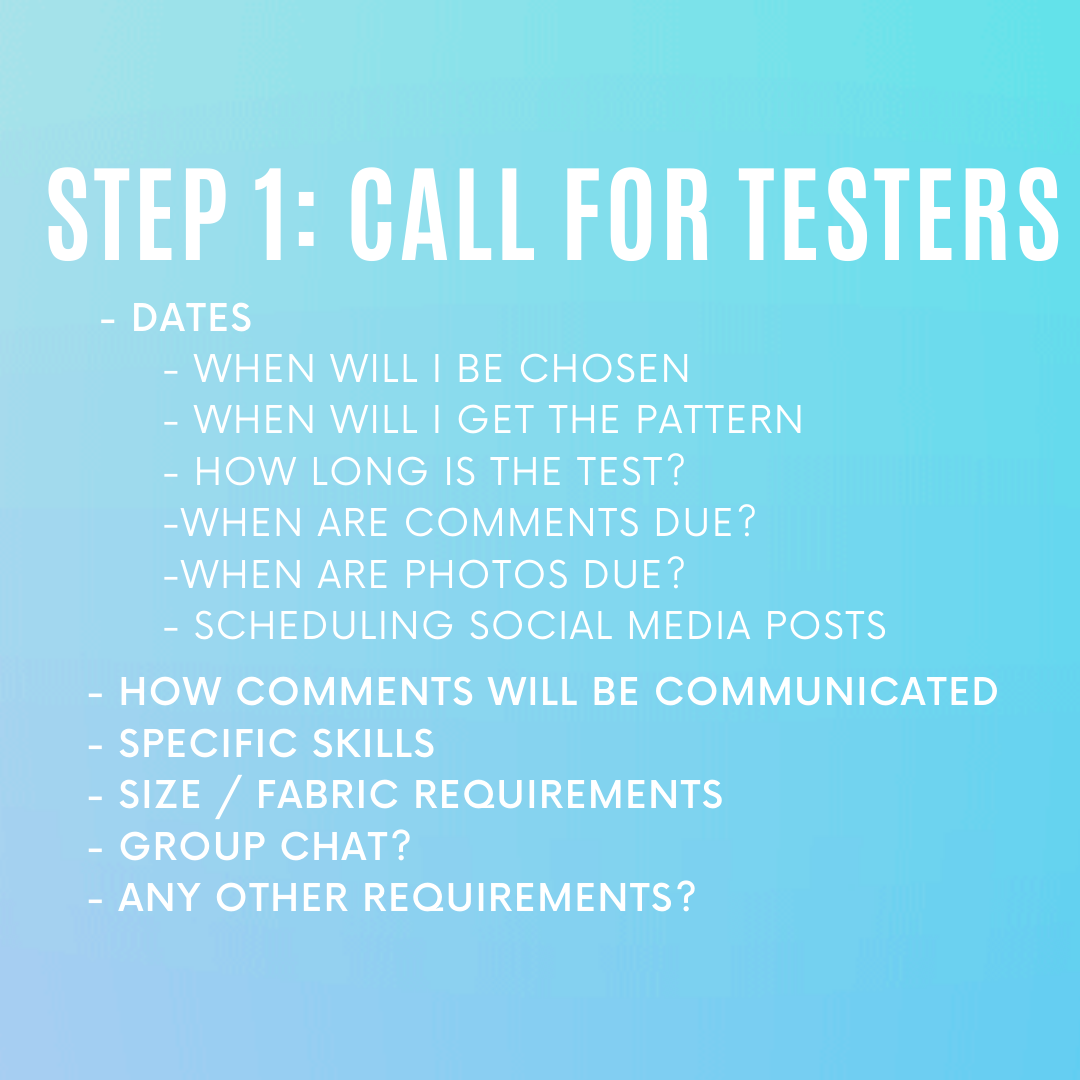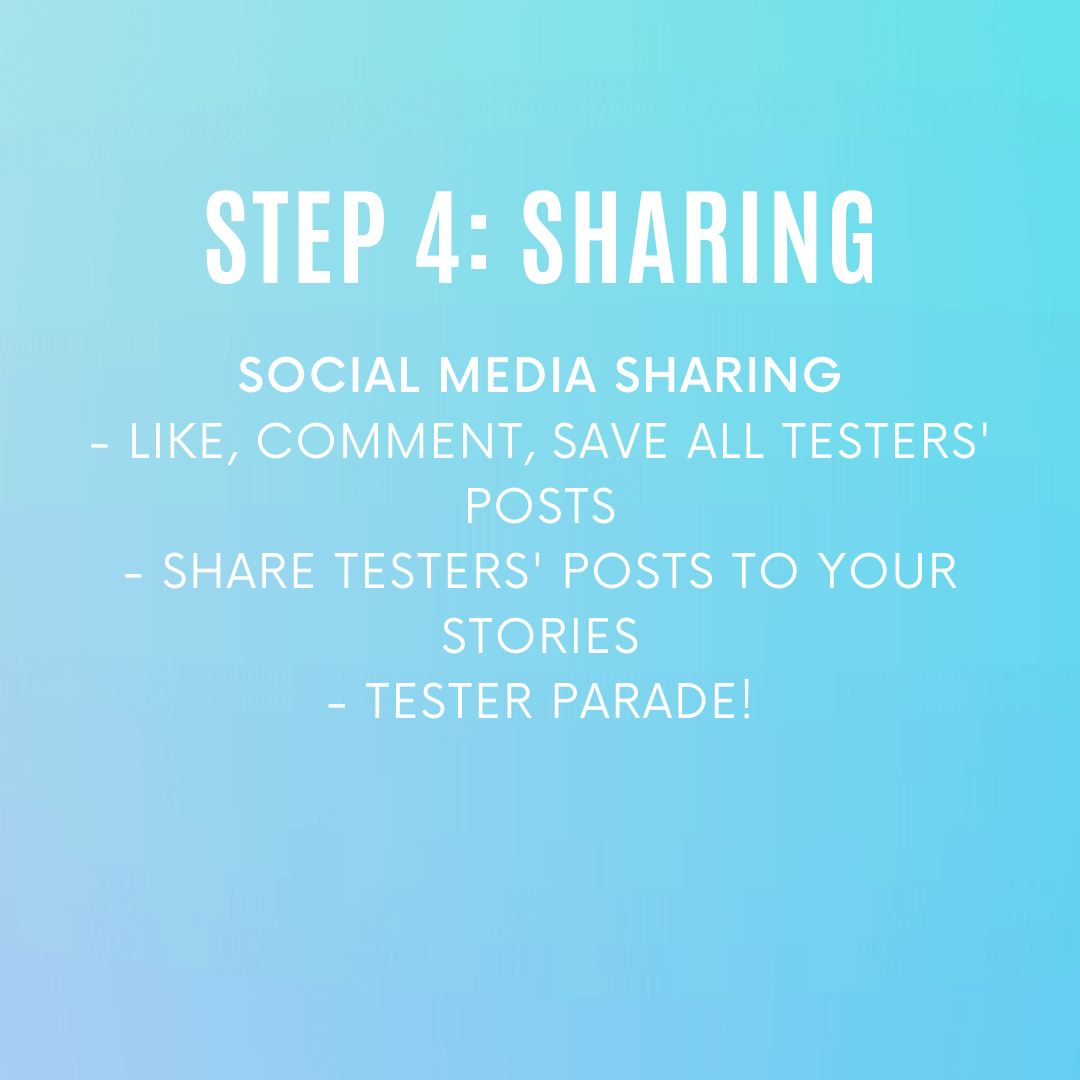To: Pattern Writers From: A Pattern Tester
I set out on my quilt pattern journey after taking the Pattern Writing Academy course from Alderwood Studio. I had met so many quilty friends and wanted to support them! Pattern testing was fun and exciting, there is a sense of makers supporting makers and creating a welcoming space for everyone. Quilters are usually very excited and happy to lend a helping hand in the release of a new pattern. However, there have been some “interesting” pattern tests I’ve been apart of. I’m over here sifting through what worked and what didn’t. I want to give pattern designers a leg up when putting together their testing group, hoping to make everyone’s experience a GREAT one!
As a disclaimer, I am in NO way bashing or hating on any of the designers I have personally worked with. Each and everyone has produced beautiful patterns and created a welcoming atmosphere to the community. However, every testing group was completely different, which is expected with different personalities and styles. I think there’s a way to create a standard and make every pattern test truly AMAZING! Pattern testing is both a time commitment and an expense; how can we be more kind, helpful, and appreciative to our wonderful community?
In addition to my comments, I reached out to my Quilty Instagram community for their thoughts. With the overwhelming response to the survey I put out, there will be a second post that summarizes all the data/feedback I received. It’s important to be able to hear everyone in their own voice, and not just through mine. Below are my thoughts with some help from the survey responses to make pattern testing a better experience for everyone involved.
Let’s start from the beginning:
Call for Testers!
Most testers have done at least one pattern test before. They know what they’re getting into, but also how to be picky about which patterns to test. Some are VERY loyal to designers, others go with aesthetic preferences, and newer ones go for anything and everything. Once I started to learn how testing worked it was easy to fall down the rabbit hole of “I have to test for EVERYONE!” As a designer, I highly suggest vetting your pattern testers and ask them the right questions when signing up to test for you. As a tester here’s what I want to know up front; be transparent and respectful.
Dates! I want to know ALL the dates!
When will I be chosen. Am I waiting for your response over a weekend, a week, LONGER?!?! I had one designer come back to me three weeks later accepting me as a tester. Uhhh, what pattern was this for? Who are you? I highly recommend asking for testers on a Friday and getting back to them Monday (or sooner if you know who you want the second they sign up).
When will I get the pattern. Start the test off on the right foot, have the pattern to testers within a week of sign up. Also, go through the pattern an extra couple times for mistakes. From other testers, and myself, having to fix a lot of minor grammar or graphic mistakes is laborious and not worth our time to fix. One or two, that’s okay. The same mistake over and over. Uff Da!
How long is the Pattern Test? When are comments due? When are photos due? How long does the tester group have to complete this pattern test? Most pattern testers want at least a month to complete their quilt top, 6-8 weeks is preferred. It takes time to get fabric, read the pattern, cut the fabric, piece, finish the top, potentially quilt it, take photos, and write feedback along the way. Give enough time to do it all! When are the comments and photos due? The same day? Different days? As a tester it usually doesn’t matter to me! If there is a later photo due date, the quilt top might be quilted or have more exciting quilt in the wild photos. Just let me know right off the bat!
Scheduling Social Media Posts. Do you have a schedule in mind? Does it matter to you? Usually the designer doesn’t care about specifics, but there are designers who want posts on a schedule. Honestly, it doesn’t truly matter if there is or isn’t a requirement, I just want to know up front, no surprises! Social media and promoting a pattern takes A LOT of time out of a tester’s schedule. Be courteous when requesting specific content.
How Comments are Communicated
My very first Pattern Test the designer used a Google Sheet, off of the suggestion of another tester. GAME CHANGER! I thought after that, all pattern tests were done this way. (No they aren’t!) Having a Google Sheet or Dropbox File(s) for the tester team to fill out as we work on the quilt top is simply wonderful (I was going to use ‘amaze balls’ here, but not sure if that’s a me term or if everyone would understand…). It by no means needs to be fancy. I go into more detail on how to set this up below. If there is a preferred method of communication let the testers know.
Any Specific Skills a Tester Needs to Make the Pattern
Is the pattern heavy in Half Square Triangles? Foundation Paper Piecing? Chain piecing? Flying Geese? Some crazy unique, yet totally awesome new way of piecing? Let the testers know! If a pattern has 100 flying geese, personally I’m not going to enjoy myself. If it’s a designer I REALLY want to work with, it’ll still be fun. If not, I’ll probably skip this test and let someone else who likes flying geese enjoy the experience. Having quilters who want to be apart of the test makes the group a thousand times more enjoyable for everyone involved!
Sizes and Fabric Requirements
Pattern testing is expensive! Plain and Simple. I made the mistake of signing up for a Throw for a pattern test without knowing the exact size of the throw. Did it turn out amazing and I’m glad I did it, yes! Should I have been more careful signing up, also yes! Was this throw size quilt large, YES! As a pattern designer, the size of the quilt is known. So…. share exact sizes at sign up! Don’t make it a mystery! I would love to see a sign up that has the size options, the dimensions, and yardage requirement. Example: Baby 48” x 48” roughly 3 yards of fabric. My day would be made!
Will there be a Group Chat?
There is no, “There NEEDS to be a fun group chat to pattern test” rule. However, whether the tester is quilting as a business or as a hobby, quilty friends are GOLD! I love being apart of group chats and creating relationships with other quilters who I might not have ever met without pattern testing. Bonus if I already know a quilter in a new pattern test! Instagram chats can get a little nuts, but it means the testers are talking, usually about the pattern. Ummm that’s a GREAT THING for the pattern designer! Creating a fun and exciting group of testers is also a great way to have a productive release day. The pattern tester groups I’ve been apart of who are chatty and get to know the designer and the other testers have THE BEST Release days! (Not sure if this statement is true for the business side of a pattern release, but the connection and interaction side – oh yeah!)
Are there ANY other requirements?
One thing that that I’ve found to be difficult to swallow is when you’re nearing the end of the pattern test or you’ve already submitted everything required, and the designer sends out a message that they need x, y, or z from everyone. It could be as simple extra photo or personal bio. However, I have already checked out of this test, my social posts are planned, and I’m onto the next thing. As a designer, if there is any other requirement needed, tell the testers upfront. Be open and honest, no surprises!
The testers have been assembled!!
Don’t forget to tell the rejected quilters they are not involved in this pattern test. Some testers wait to hear from you and no one likes to get ghosted.
Welcome E-mail
The first real interaction with a tester group is through a Welcome E-mail. My favorite emails are a little quirky, with a lot of important information in one spot I can go back to. One of the main things I’ve learned throughout my career is put it in writing. If it’s in an E-mail and easy to reference, I’m happy! Here’s what I would include in my Welcome E-mail.
1. Thank you and why the pattern means so much to me.
A couple sentences to welcome the testers into the group. Share the reasons for the design of the pattern, have them fall in love with the beauty and art that is a quilt pattern.
2. A little buttering up, but be genuine, don’t fake it.
“I’m excited to see everyone’s creativity shine through this pattern!”
3. Copy Paste ALL the DATES from the tester call!
No one writes them down, put it in the email! If a date needs to be modified do it now. Any other deadlines add them in.
4. Requirements for the group
Copy it from the call write up, it doesn’t need to be reworked or anything fancy. Just have it written down.
5. Specific questions about the pattern.
Examples: “I have doubt about my math for the baby quilt Half Square Triangles, please let me know if it makes sense.” “Is there a better way to make this piece?”
6. Deliverables. How to submit them.
My pitch for a Google Sheet is below. However, should the testers be marking up a pdf of the pattern, listing out changes in an email, or sharing in the Instagram Chat (I would not recommend this, chats can get crazy and missed messages are common!). Have a system that works for you as the designer. This is how the majority of the testers’ work is going to get back into the pattern.
7. All things Social Media
Posts, Pattern Designer’s Handle, Hashtags, Group Chat, Sharing, Release Day Information. All in one spot!
8. Photo Consent
It’s legal blah blah, but it’s needed. No one wants to get sued over a pattern test!
9. Thank you (you really can’t say it enough!)
Really, say it again and again. A (or two, or ten) thank you goes a long way. A REALLY long way!
10. Attach a Reviewed Pattern
Don’t forget to attach the pattern! While we’re at it, read through it one more time before you hit send!
Now set up that Instagram Chat, and let the testers do their thing! While on the topic of the group chat, the designer is the moderator. Many testers complain that group chats go off on weird, sometimes long, tangents that don’t relate to the pattern. Please, keep the chat on task and/or quilting related.
Let’s talk Google Sheets. Google Sheets and pattern testing just make sense to me. It’s a live spreadsheet that testers and the designer can add to at any time. Let’s say Sally found a mistake on the cutting instructions right away. She writes the mistake in the google sheet and the other testers see it before they start cutting. We just saved everyone (except for Sally, sorry Sally) time and materials before they even started testing. Another example: on page three, Amanda asks “Why can’t we use four at a time HST’s for this?” Oh great idea let’s do that and have the other testers make sure the math works out for the new four at a time HST’s! The end results of the patterns will have more collaborative and comprehensive results. It saves pattern testers time (and potentially materials). It also allows designers to work on corrections while testing is happening. Here’s the column headings I would use on a Pattern Test Google Sheet.
Date
Page Number
Feedback - Heading
Notes
Tester’s Name
Designer’s Response
Corrected (Yes/No/In Progress)
Date Corrected in Pattern
Designer Comments
Stoplight color coding would also work great! The way I use Google Sheets as a tester is to open it up before I start my work, read any new entries, then start working on my next step. If I find a mistake or have a question I would write it in the sheet as I work through the step, before moving onto the next step. This will only truly work if all testers are on board. As the designer if this is the way you will be collecting feedback, include it in your Tester Call, then the pattern tester can say yes/no to using Google Sheets.
* If anyone has an other comments to add about using Google Sheets send me a message and I’d be happy to update this section with more information on what works/doesn’t work. *
When feedback is coming in, use it. Many pattern tester’s have said that designers don’t incorporate the feedback they’ve provided, most notably when something is actually wrong. My question to designers: why even have pattern testers if you aren’t going to listen to their comments?
Reminder E-mail for Comments/Photos
Life happens people miss deadlines. Choose one: Reminder E-mail or Reminder in Group Chat. If it’s one person who hasn’t submitted feedback send only them a nice direct message/E-mail reminder. Doesn’t need to be fancy, just be kind. I wouldn’t suggest a reminder E-mail the night before, shoot for a week before something is due!
Sharing on Social Media and Release Day
We’ve made it this far, almost there!! The pattern testers are making this beautiful quilt pattern. Everyone is excited, happy, and sharing to their followers. As a pattern designer, it’s go time! Remind them a couple days before release day on how/when you want them to share. Remember they should already have this information, but put it back in their heads so they don’t miss it. Share, like, comment, and click the save button on everything the testers post that has the quilt pattern tagged in. I’ll be diving into more about compensation in the next post (scroll to the bottom), but the easiest and cheapest way to compensate is right here. Share and promote EVERYTHING!
Release day! Like I said before I’ve been fortunate to be included in some amazing release days! When a pattern test group loves the quilt pattern and/or the designer, the day is pretty spectacular! As the designer, post first thing in the morning on release day. That way the testers don’t have to worry about being the first one, when to post, or am I posting too soon. Share, like, comment, save, and allow everyone to drink in the hype! If a designer is doing a tester parade, which I’d recommend, make sure you include everyone in the parade. Don’t exclude anyone, on purpose or by accident.
Thank You E-mail
One final E-mail needs to be sent. The “Thank You” E-mail. This can be short and sweet or really pour your heart into it. Both will make the testers smile. Personally I don’t have a preference, so send it either on pattern release day or the day after, but make sure you send it! Also, attach the final copy of the pattern for their use. Say Thank You a million times and make the testers feel appreciated.
That’s it. I know it might seem like a lot, but once you do it the first time you’ll have everything set up going forward. Personally, and many other pattern testers agree, if a pattern tester is treated with respect and not taken advantage of they will sing the pattern designer’s praises. Pattern testers deserve all the love you can give them and help along the way. Pattern testers do this for the love of quilting and supporting other creatives.
If you have any comments or suggestions to add to this post feel free to message me on Instagram @quarterlifeleap.





